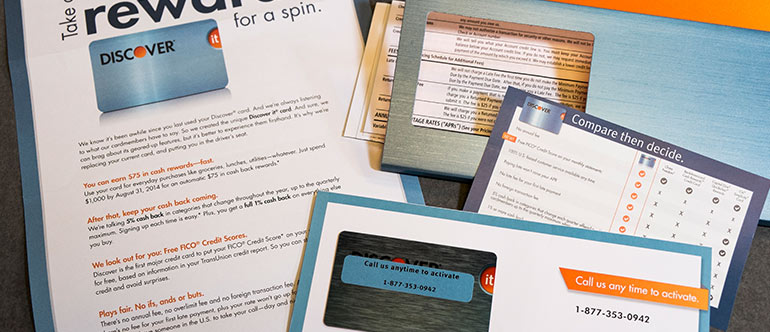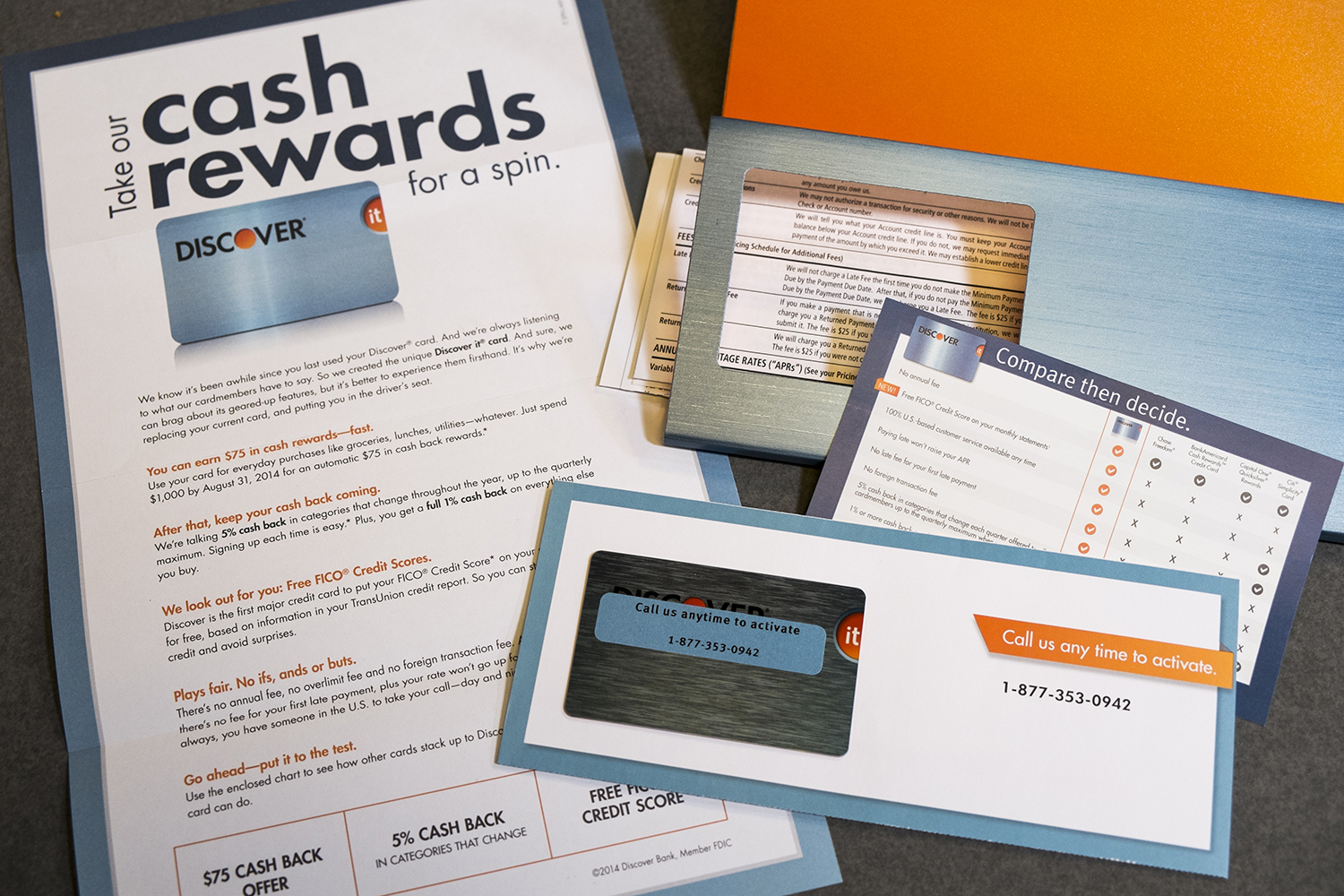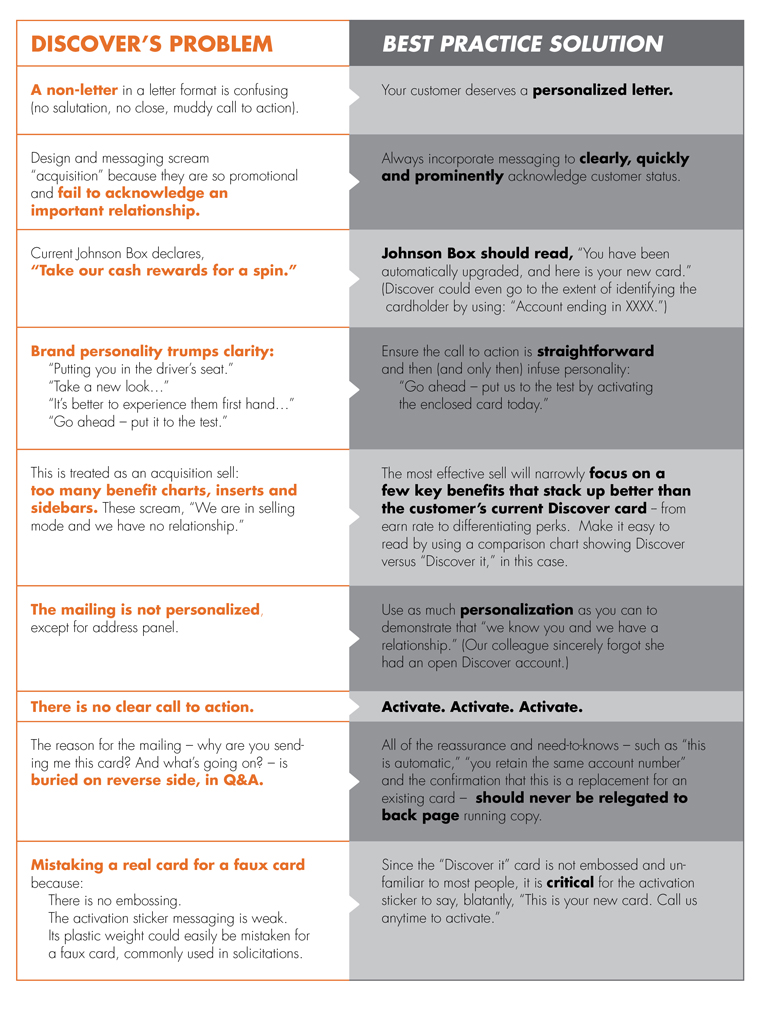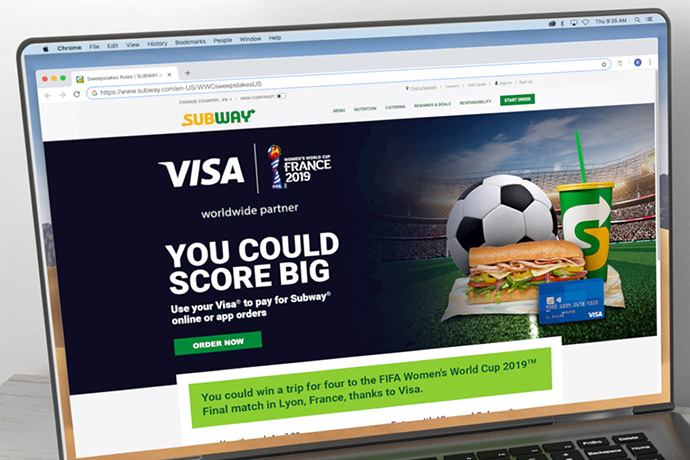Critique: Unsolicited “Discover it” Card

In the interest of full disclosure, many credit card issuers upgrade and cross-sell their cardholders without seeking permission. In fact, this practice is a legitimate one that breaks no regulations. Recently, we noticed Discover’s cross-sell campaign was creating confusion by replacing an inactive Discover card with a different Discover card – in this case, the “Discover it” card.

Dazed and confused
A co-worker recently received what she believed to be a solicitation for “Discover it.” The financial services team, as per our practice, rifled through the pile of credit card marketing mail bestowed upon us from the colleague’s home mailbox (typical of what we do to stay current with what’s in the mail). At first glance, what we believed to be a “Discover it” direct mail acquisition package was actually a card cross-sell. It took careful reading and a look at the fine print to confirm that our co-worker had just handed over a $6,000 line of credit attached to a real card.
Best practices to the rescue
To improve its efforts, Discover could follow some simple best practices. In doing so, it would ensure a smoother customer experience and, we believe, a newly active cardholder. Discover would benefit by avoiding waste (this was by no means a cheap direct mail package), increasing the acceptance and activation rate and, ultimately, engagement.







